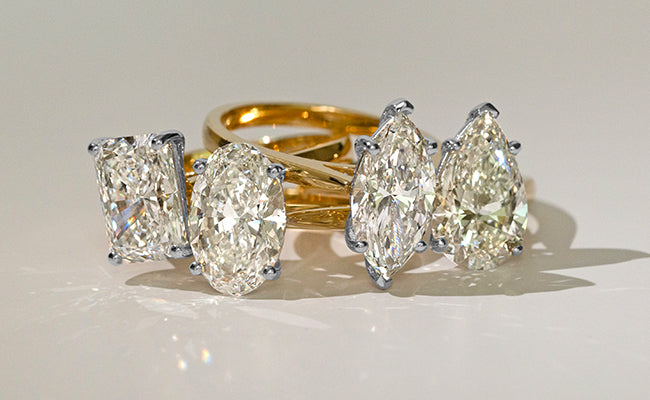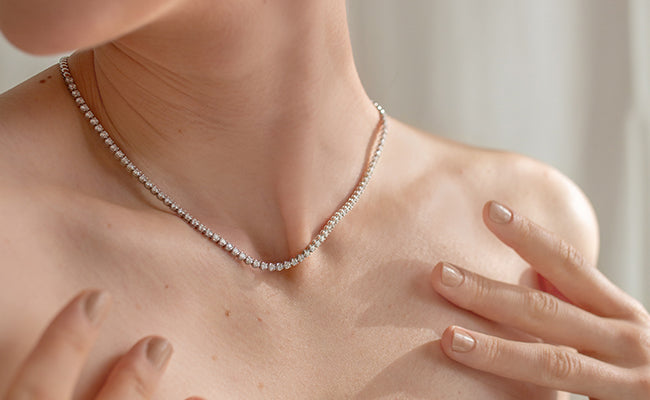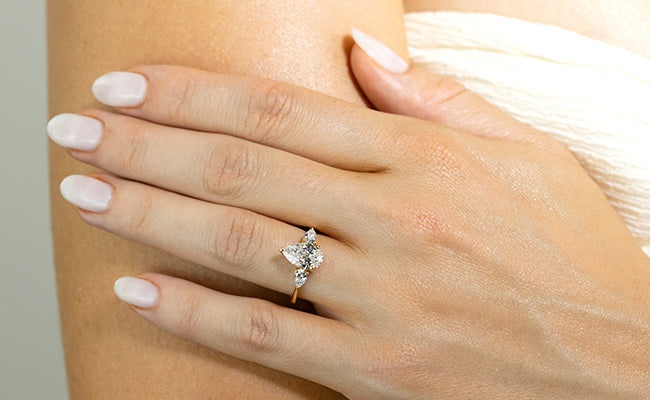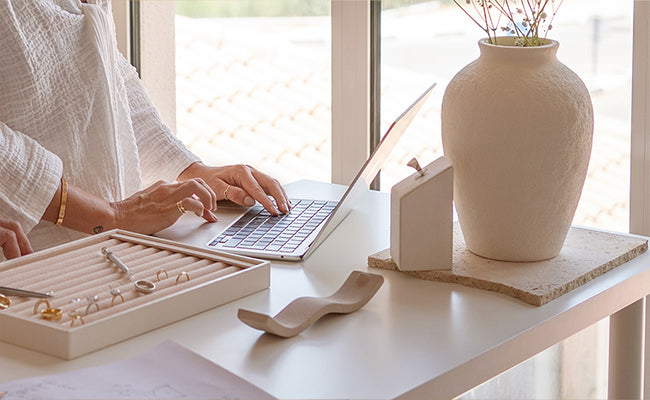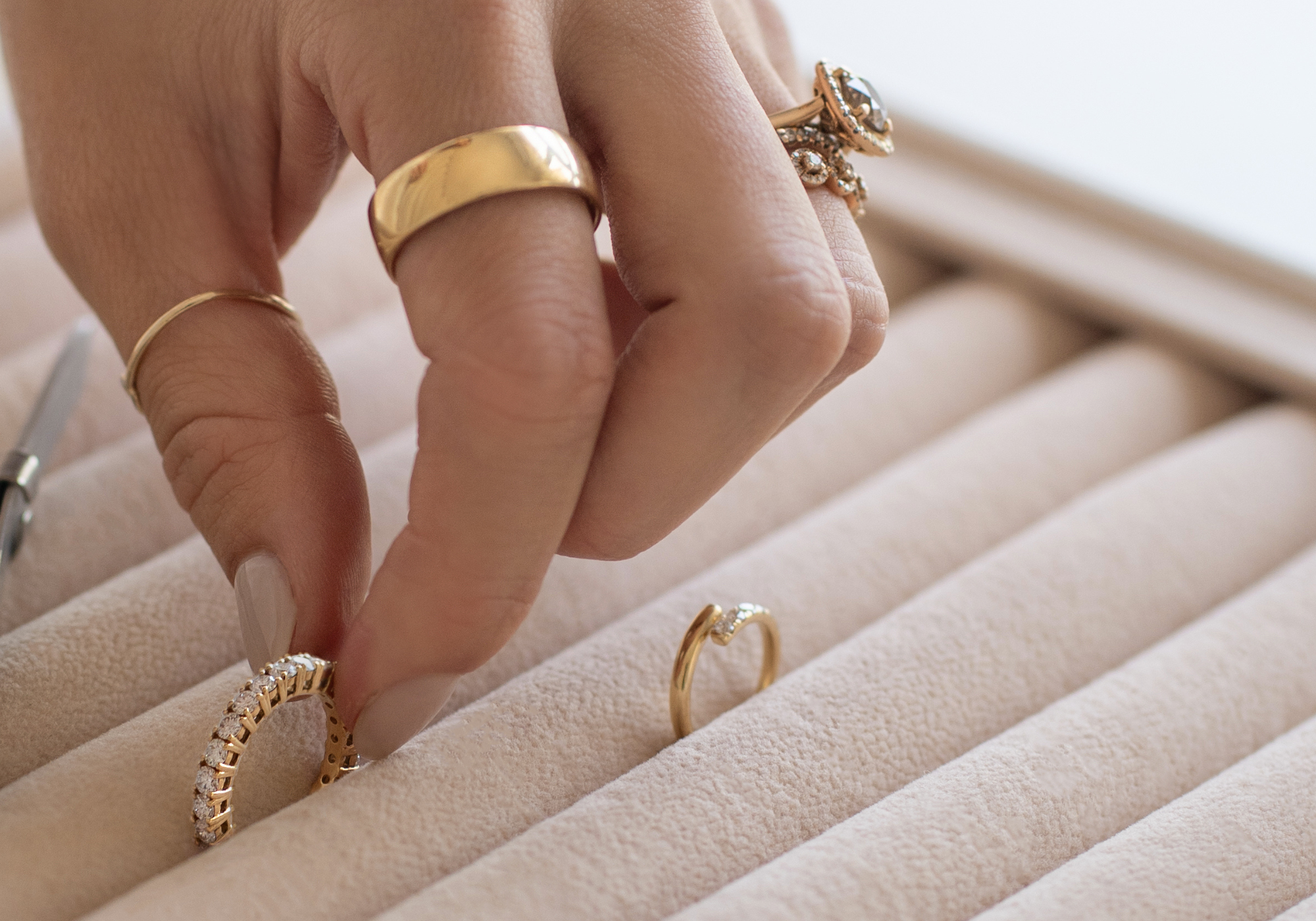Article: How to Choose the Perfect Engagement Ring
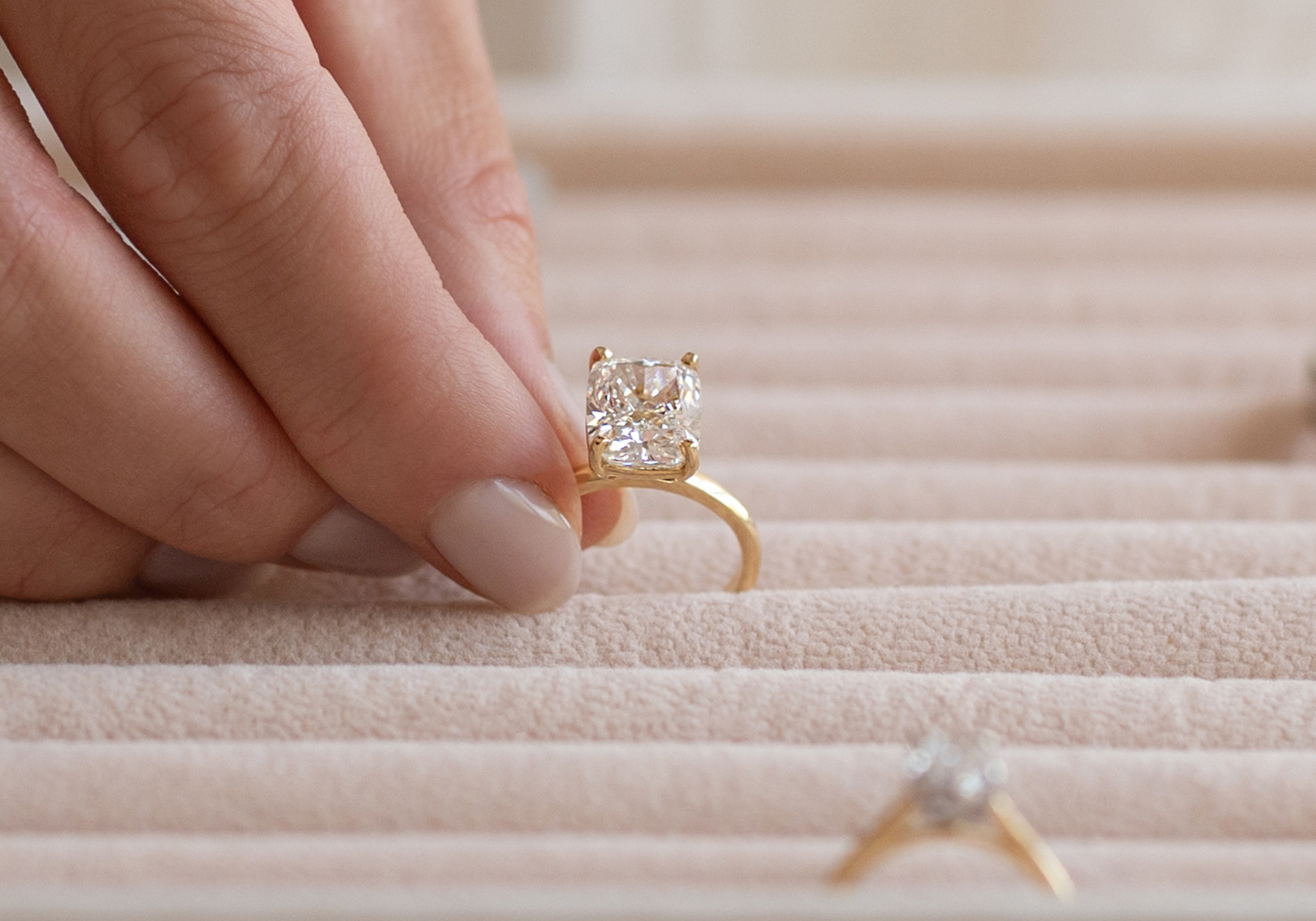
How to Choose the Perfect Engagement Ring
Choosing an engagement ring is one of the most meaningful purchases you'll ever make - and also can be one of the most overwhelming; with endless options in diamonds, gemstones, settings, and metals, where do you even start?
Whether you're planning a surprise proposal, or shopping together as a couple, this complete guide will help you understand the key decisions so you can choose the perfect engagement ring with confidence.
Step 1: Diamond or Gemstone?
Choosing between a diamond and a gemstones for an engagement ring ultimately comes down to personal style, symbolism, and priorities. Diamonds are prized for their brilliance, durability, and timeless appeal, making them a classic choice. However, gemstones like sapphire, emerald, ruby, and more offer vibrant colour and individuality, and they can also be a more budget-friendly option. If you're drawn to tradition and lasting sparkle, a diamond might be the way to go. If you want something bold or a little unexpected, a gemstone ring can feel deeply personal and one-of-a-kind.
Option 1: Diamonds & the "4 Cs"
If you're going to choose a diamond - undoubtedly the most traditional and common choice for an engagement ring stone - start with the 4 Cs: a globally accepted grading system created by the GIA (Gemmological Institute of America).
Here is a high-level summary. Find more detail in our in-depth guide on the 4 Cs.
1. Cut
How well the diamond is shaped. The most important factor affecting brilliance or sparkle.
- Grades: Excellent; Very Good; Good; Fair.
- Tip: Prioritise cut for sparkle
2. Clarity
The presence of internal or external imperfections (called inclusions or blemishes).
- Grades range from Flawless (FL) to Included (I1 - I3)
- Tip: Many diamonds with lower clarity glades like Slightly Included (SI1 or SI2) are still considered "eye-clean" meaning their inclusions are not visible to the naked eye.
3. Colour
Measures how colourless the diamond is.
- Grades range from D (colourless) to Z (noticeable yellow/brown tint)
- Tip: Near-colourless grades (G-H) can offer great value
4. Carat
The diamond's weight, not size.
- Generally, a larger carat is likely to be a visually larger diamond.
- A 1-carat center-stone diamond is popular.
- Small differences in carat can significantly impact price.
Option B: Gemstones; an modern alternative
While diamonds are the classic choice, they're no longer the only one. More couple today are embracing alternative gemstones - either for ethical reasons, budget considerations, or a desire for something different.
Alternative stones often shine brightest in non-traditional settings. For more tips and an in-depth look at gemstones, read our gemstone guide.
In the meantime, here are a few stunning, durable options to consider:
1. Moissanite
- Brilliant and durable (second only to diamonds).
- Lab-created and eco-friendly.
- Offers maximum sparkle at a fraction of the price of diamonds.
2. Sapphire
- Comes in a variety of colours; not just royal blue.
- Exceptionally hard and durable.
3. Morganite
- Soft blush-pink colour.
- Romantic and feminine.
- Often paired with rose gold for a dreamy aesthetic.
4. Emerald
- Deep green with vintage charm.
- Slightly more delicate.
5. Ruby
- Bold red colour.
- Durable and dramatic.
- Pairs beautifully with yellow or white gold.
6. Aquamarine
- Cool-toned, ocean-blue hues.
- More affordable than other coloured stones.
- Light, breezy, and perfect for minimalist tastes.
Step 2: Choosing the Shape
The shape of the stone plays a big role in the ring's personality and style. Popular options include:
- Round Brilliant - Classic and timeless.
- Oval - Elegant; elongates the finger.
- Princess (square) - Modern and bold.
- Emerald - Vintage glamour, with step-cut facets.
- Pear - Romantic and unique.
- Cushion - Soft, square shape with rounded corners.
Step 3: Pick a Setting
The setting holds the center stone in place and influences the ring's overall look. Popular settings include:
1. Solitaire
- A single diamond on a simple metal band.
- Timeless, minimalist, and all about the stone.
- Perfect for those who love classic, understated elegance.
2. Halo
- A central stone surrounded by a ring of smaller diamonds.
- Adds sparkle and makes the centre stone appear larger.
-
Adds additional sparkle and glamour.
3. Hidden-Halo
- A ring of smaller diamonds placed under the center stone.
- Adds sparkle only visible from the side view.
- Great for people who appreciate a subtle touch of sparkle.
4. Pave
- Small diamonds set into the band, close together.
- Creates a glittering, continuous sparkle.
- Pairs beautifully with solitaire or halo centers.
5. Bezel
- The stone is fully or partially enclosed in a metal rim.
- Sleek, modern, and very secure.
- Great for people with hands-on jobs or minimalists.
6. Three Stone
- Features a centre stone with two usually-smaller side stones.
- Symbolises past, present, and future.
- Sentimental and balanced.
7. Cathedral
- Arches of metal rise to support the stone like a cathedral ceiling.
- Adds drama and height while protecting the setting.
- Ideal for vintage lovers, or those wanting a regal touch.
8. Tension
- The stone appears "suspended" between two ends of the band.
- Modern, architectural, and attention-grabbing.
- Bold and unconventional; great for lovers of sleek design.
9. East-West
- The stone is oriented horizontally.
- Unique twist on classic shapes like ovals or emerald cuts.
- Chic and unexpected.
Step 4: Select the Metal
The metal you choose for your engagement ring band plays a big role in the ring's overall aesthetic, durability, and long-term maintenance. Here are the key options:
1. Gold (Yellow, White, & Rose)
Gold is a classic and highly versatile choice for engagement rings. It comes in different colours and karats.
- Yellow - Warm, right tone; perfect for vintage styles or warmer skin tones.
- White - Silvery-white and modern; requires rhodium plating to maintain colour.
- Rose - Romantic, pink-toned; flatters most skin tones and is very trendy.
Karat (with a "K") is different to Carat, which we talked about earlier with diamonds. Karat indicates purity; the higher the karat, the purer the gold - but also the softer and more prone to scratching. The most common choices for karat are:
- 14K gold (58.5% pure gold): More durable, better for everyday wear, and more affordable
- 18K gold (75% pure gold): Richer in colour, and slightly softer than 14k.
2. Platinum
Platinum is a premium metal often chosen for its luxurious weight, durability, and natural white sheen. Unlike white gold, which requires rhodium plating to maintain its brightness, platinum maintains its colour over time.
- Naturally white, with a soft silvery-grey tone.
- Extremely durable and dense - great for secure stone settings.
- Hypoallergenic, making it ideal for sensitive skin.
- Often used in high-end or heirloom-quality rings for its longevity.
Step 5: Setting a Budget
There's no magic number when it comes to how much to spend on an engagement ring. The old "3 months' salary" rule is outdated - the right budget is the one that feels right for you and aligns with your financial priorities as a couple. Here are some ways you might maximise your budget:
- Decide what's most important - e.g., carat, or colour and clarity?
- Consider lab-grown diamonds - these are chemically and visually identical to natural diamonds, and cost considerably less.
- Choose just under popular carat weights - e.g., a 0.90ct stone can look almost identical to a 1.00ct stone but be significantly more affordable.
- Play with shape - Less-common cuts like pear or cushion can be priced lower than heavily-demanded round diamonds.
- Start simple - Opt for a classic solitaire now, and upgrade or add accents later.
- Go alternative - Stones like moissanite, sapphire, or morganite can be stunning and distinctive at a lower price point.
At Saint Stone, aside from offering exceptional value, a core principal of ours is to be completely transparent with our pricing, so when you start designing your ring with us, you can see how different choices impact the price exactly.
Remember: an engagement ring is not about the price tag, but the love and intention behind it. Whether you're working with $1,000, or $10,000, the best ring is one that reflects your partner's style, suits your lifestyle, and represents your commitment to each other.
Step 6: Understand Ring Size
If you're shopping in secret, this part can feel tricky. Ideally you want to get ring-size right first time; however, depending on the design of your engagement ring, re-sizing isn't too difficult. For advice on how to discreetly find your partner's ring-size, read our guide on shopping together versus surprise engagements, for more ideas.
Final Thoughts
The perfect engagement ring doesn't have to follow trends or rules - it just has to feel right for your relationship. Think about what they wear, what makes them smile, and what best tells your story.
At Saint Stone, we're here to guide you through every step of the process. Book your free virtual appointment with no obligations and let us help you to find the perfect engagement ring.


